|
|
|||
|
(Back to Preceding Week; on to Next Week) |
|
All text & photos © Hilton Pond Center WHAT GOOD IS A BUTTERFLY? We were introduced to the science of ecology during senior high school days via The Forest and the Sea: A Look at the Economy of Nature and the Ecology of Man--a long-titled, thought-provoking book published in 1960 by Marston Bates. The term "ecology" had been coined around 1866 by famous German zoologist Ernst Haeckel from two Greek words oikos meaning "house" and logos for "knowledge of" or "study of." This concept became burned into our brain cells as we read in Bates' book how tropical jungles and the oceans, the flower and the wasp, the bacterium and Homo sapiens are all tied together. Bates also opened our eyes to the impact humans have on their natural surroundings and sent us off along the environmental path we still follow almost a half-century later. But perhaps the single most memorable thing about Bates' book for us was a simple quote on the back cover of the paperback edition: "What good is a butterfly?"--a question that has framed the way we think and teach about nature. Indeed, what good IS a butterfly?
All text & photos © Hilton Pond Center At first blush this seems like a preposterous question. Even though we've heard it many times we still must stifle a gasp when someone says the words; it just doesn't seem like something anyone should ever ask. We've tried to change the query in our mind to "What's a butterfly worth?" but that seems even more empty than "What good is a butterfly?" Thus, we re-phrase the question in terms we can deal with: "What role does a butterfly play in the environment?" This isn't really the thought presented by the typical questioner, but structuring the inquiry in that way at least gives us opportunity to get in a good ecology lesson. Let's face it, butterflies are good for LOTS of things besides bringing color to the landscape and giving rise to poetry. Some adult butterflies do not feed, but many DO dine on flower nectar and, as a result, serve as important pollinators of native plants. It's not coincidental the photo at the top of this page is of an Eastern Tiger Swallowtail on a Swamp Milkweed or that the image just above depicts a Common Checkered Skipper nectaring on Daisy Fleabane. Although everybody knows about the birds and the bees, butterflies are typically overlooked as plant pollinators. In fact, some flowers with particularly long tube-like corollas or flower spurs depend exclusively on some butterfly, whose equally long, slender proboscis uncoils far enough to reach nectar while the insect's other parts implement the pollination process. Some entomologists claim only bees outrank butterflies on the Important Pollinators List.
All text & photos © Hilton Pond Center As organisms that undergo complete metamorphosis, butterflies produce a larval stage generically referred to as "caterpillar." These succulent larvae may be the single most important component in a food chain that involves countless caterpillars feeding on fresh new tree leaves in the canopy and being gobbled up by wave after wave of spring migrant warblers that need a rich energy source to fuel their northbound flight. Later, as breeding sesson unfolds, a multitude of resident songbirds forage for whatever energy-rich caterpillars remain and feed them to their chicks. By late summer, Monarch butterfly caterpillars (above) mature to yummy-looking three-inch creatures that have grown up eating milkweed foliage. However, few birds eat Monarchs because milkweed alkaloids concentrate in larva and adult and make them unpalatable. (One of our most memorable nature images is Lincoln Brower's photo of an unsuspecting juvenile Blue Jay gagging and throwing up after eating a Monarch butterfly.) So, if nothing else, when asked "What good is a butterfly?" we can explain that butterflies are good for pollinating plants and for providing food for birds. And because these showy-winged insects are relatively fragile and susceptible to disturbances of various kinds, they also act as easily observed front-line indicators of the health of a particular ecosystem.
When we would extract a soft and furry baby Guinea Pig (above, left) from a box beneath our desk, the students' first-day response typically was always something like, "Awwwwww. Isn't it cute?" In every case we politely but firmly replied "cute" was not an acceptable modifier to use about an animal in our biology classroom. Next we would bring out a big scaly Green Iguana (below right), to which the predictable class response would be a very different and much more demonstrative "Ewwwwww. That's ugly!" (CAVEAT: Showing we weren't TOO hard-core about all this, we DID allow students to say "I THINK that Guinea Pig is cute" or "The lizard looks ugly TO ME." Phrased that way, students weren't ascribing such characteristics to the organism itself but were admitting they were obviously making HVJs. One may say we were splitting hairs on all this, but our students soon came to understand the difference--an important lesson for young science scholars to learn. To this day we still get e-mails and letters from old students who insert an emphatic "No HVJs!" comment somewhere in their messages.) To drive home our point of not making Human Value Judgments about organisms, we'd give our classes an assignment we called "Anti-Anthropomorphization" in which we challenged them to find as many words as they could that used animal names as adjectives or adverbs--
"Anti-anthropomorphization" was a fun exercise with a relevant take-home message, and it also helped with vocabulary building. The assignment's real value, however, was that it laid groundwork for a student to understand why "What good is a butterfly?" is an almost rhetorical but poorly phrased query. Having been trained NOT be anthropomorphic or to make Human Value Judgments, we--and our students--like best the way Bates answered anyone who dared pose the question. His thought-provoking response to "What good is a butterfly?" was simply "What good are YOU?"
All text & photos © Hilton Pond Center
POSTSCRIPT: Almost immediately after posting our photo essay above we got a Facebook message from Dawne DeLozier McLoed--one of our eternally young biology students from 30-plus years ago--reminding us of our lecture entitled "Beauty Lies Not in Form, But in Function." (We can't believe we forgot to mention that concept, but it seems our students remember our lectures better than we even do.) The gist of that particular talk is that any given organism--say a Black Rhinoceros--may not be "pleasing to one's eye" (i.e., its form is "ugly" or "unattractive"), but it still functions beautifully within its environment. In this sense, EVERY organism--from slimy salamanders to prickly cacti--is "beautiful." Thanks, Dawne, for the reminder. No HVJs! All text & photos © Hilton Pond Center Comments or questions about this week's installment?
Thanks to the following fine folks for recent gifts in support of Hilton Pond Center for Piedmont Natural History and/or Operation RubyThroat: The Hummingbird Project. Your tax-deductible contributions allow us to continue writing, photographing, and sharing "This Week at Hilton Pond." (Please see Support if you'd like to make a gift of your own. You can also contribute by ordering an Operation RubyThroat T-shirt.)
"This Week at Hilton Pond" is written & photographed You may wish to consult our Index of all nature topics covered since February 2000. You can also use our on-line Hilton Pond Search Engine at the bottom of this page. For a free, non-fattening, on-line subscription to |
|
Make direct donations on-line via
Network for Good: |
|
|
Use your PayPal account
to make direct donations: |
|
|
If you like to shop on-line please become a member of iGive, through which more than 1,800 on-line stores from Amazon to Barnes & Noble, L.L. Bean to Lands' End--and even iTunes!--will donate a percentage of your purchase price in support of Hilton Pond Center and Operation RubyThroat. For every new member who signs up and makes an on-line purchase iGive will donate an ADDITIONAL $5 to the Center. You can even do Web searches through iGive and earn a penny per search for the cause! Please enroll by going to the iGive Web site; more than 200 members have signed up to help. It's a painless, important way for YOU to support our on-going work in conservation, education, and research. By the way, if you add the iGive Toolbar to your browser and register Operation RubyThroat as your preferred charity, it'll be even easier to help Hilton Pond when you shop. |
|
|
SPECIES BANDED THIS WEEK: * = New species for 2009 WEEKLY BANDING TOTAL 11 species 67 individuals YEARLY BANDING TOTAL (2009) 41 species 1,326 individuals 28-YEAR BANDING GRAND TOTAL (since 28 June 1982, during which time 170 species have been observed on or over the property) 124 species 53,208 individuals NOTABLE RECAPTURES THIS WEEK (with original banding date, sex, and current age) Ruby-throated Hummingbird (4) American Goldfinch (5) All text & photos © Hilton Pond Center |
OTHER NATURE NOTES OF INTEREST --Ruby-throated Hummingbird numbers finally began to pick up this week at the Center. This led to substantial increase in banding captures with 39 new RTHU, plus four returns from previous years. By month's end we still had banded only 81 hummers in 2009--just 68% of the norm by that date during our on-going 25-year study. (NOTE: Deployment of a couple of new hummingbird traps designed by bander Ross Dawkins may actually skew the data this year. These traps, in which hummers capture themselves without anyone having to trigger a trapdoor, are surprisingly productive. Of 32 RTHU banded since we hung our first Dawkins-style trap (24 Aug), 26 were caught in the new devices. This bodes well for NEXT year. The downside of the Dawkins trap is that "trap junkies" tend to recapture themselves repeatedly--although this provides further evidence hummers are not unduly stressed by their trapping/banding experience.) --Lack of rain the past few weeks has accelerated effects of evaporation from Hilton Pond, so the impoundment is about 18" from being full--not an optimal situation but FAR better than devastating four-foot deficits during the past several Augusts.
NOW is the time to report your RTHU fall departure dates from the U.S. & Canada, and fall arrival dates for Mexico & Central America. |
|
|
|
(Back to Preceding Week; on to Next Week) Up to Top of Page Back to This Week at Hilton Pond Center Current Weather Conditions at Hilton Pond Center |
 You can also post questions for The Piedmont Naturalist |
Join the |
Search Engine for |
|
|

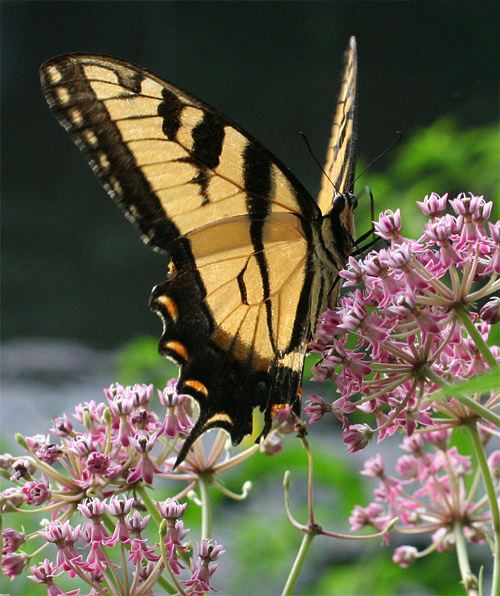
 In other words, Haeckel saw ecology as an investigation of the "household of nature" or the "whole house," including the abiotic environment and countless organisms that interacted with it and each other. What can be derived from the science of ecology is--to reiterate one of our all-time favorite phrases--"Everything is connected to everything else."
In other words, Haeckel saw ecology as an investigation of the "household of nature" or the "whole house," including the abiotic environment and countless organisms that interacted with it and each other. What can be derived from the science of ecology is--to reiterate one of our all-time favorite phrases--"Everything is connected to everything else."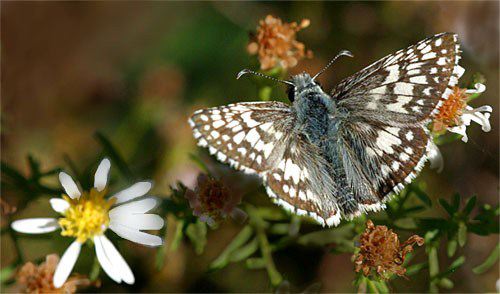
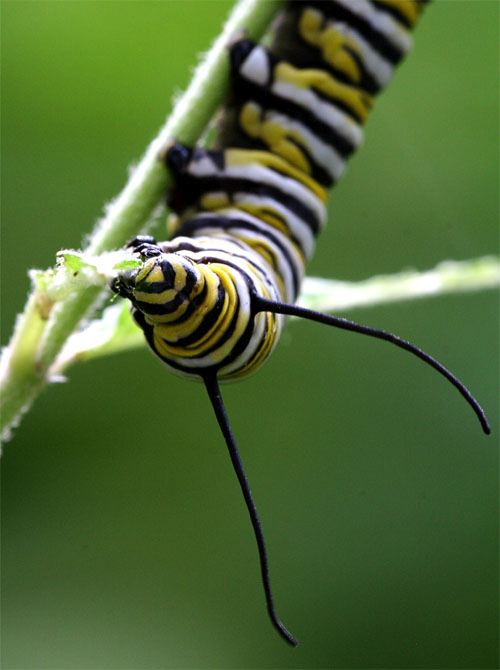
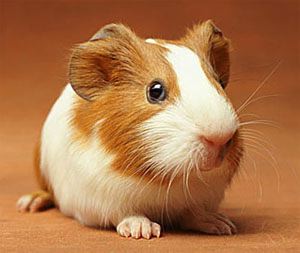 Marston Bates' "What good is a butterfly?" query also stimulated our thoughts on how to teach high school biology students to be open-minded about how they look at the world around them. From the very first day of class each semester, we refused to let our students anthropomorphize about organisms--i.e., they weren't allowed to give them human characteristics--nor could they make "Human Value Judgments" (HVJs) about plants and animals. They couldn't, for example, respond to "What good is a butterfly?" by saying these winged jewels were pretty and fun to watch.
Marston Bates' "What good is a butterfly?" query also stimulated our thoughts on how to teach high school biology students to be open-minded about how they look at the world around them. From the very first day of class each semester, we refused to let our students anthropomorphize about organisms--i.e., they weren't allowed to give them human characteristics--nor could they make "Human Value Judgments" (HVJs) about plants and animals. They couldn't, for example, respond to "What good is a butterfly?" by saying these winged jewels were pretty and fun to watch.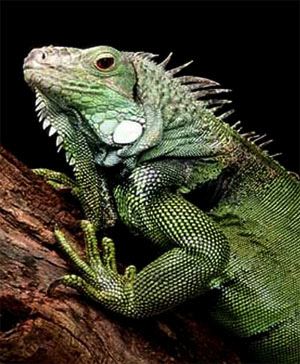 Again, our firm reply would be that it wasn't acceptable to make such a comment, that "ugly" was not a scientific term. From all this would come a discussion about calling an animal "ugly" or "cute" had no place in the repertoire of a science student; those words say nothing about the organism but a lot about the student's perspective--and sometimes about his or her prejudice. "Ugly" and "cute" are subjective and indefinable HVJs while a main objective of science is to be able to observe and measure things and describe them objectively. Thus, we also encouraged our students not to use terms such as "short" or "big" whenever it was possible to quantify--i.e., measure--the subject in question.
Again, our firm reply would be that it wasn't acceptable to make such a comment, that "ugly" was not a scientific term. From all this would come a discussion about calling an animal "ugly" or "cute" had no place in the repertoire of a science student; those words say nothing about the organism but a lot about the student's perspective--and sometimes about his or her prejudice. "Ugly" and "cute" are subjective and indefinable HVJs while a main objective of science is to be able to observe and measure things and describe them objectively. Thus, we also encouraged our students not to use terms such as "short" or "big" whenever it was possible to quantify--i.e., measure--the subject in question. terms that might be applied turn-about to people in descriptive, even derogatory fashion. This sent the kids to the dictionary--there was no Googling back then, of course--and the most persistent students usually came up with a dozen words or so, many of which end in "-ine." Here, in no particular order, is a partial list of some more commonly used "animal adjectives" they found. (Our all-time favorite--"rhinocerotic"--boggles the mind with its implications but is not listed below.)
terms that might be applied turn-about to people in descriptive, even derogatory fashion. This sent the kids to the dictionary--there was no Googling back then, of course--and the most persistent students usually came up with a dozen words or so, many of which end in "-ine." Here, in no particular order, is a partial list of some more commonly used "animal adjectives" they found. (Our all-time favorite--"rhinocerotic"--boggles the mind with its implications but is not listed below.)



 Please report your
Please report your